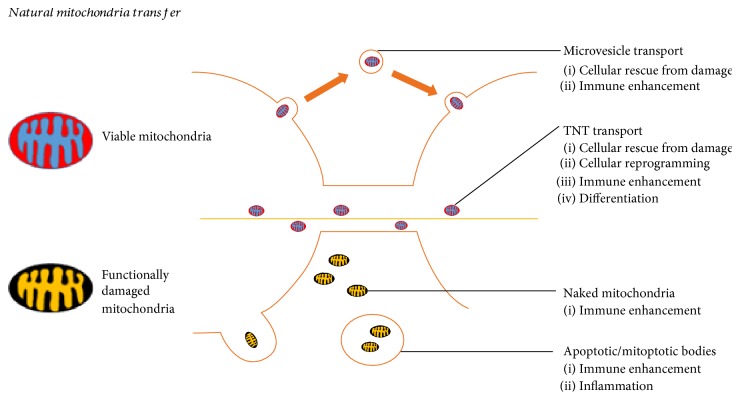Figure 1.
Natural mitochondria transfer. Viable and nonfunctional mitochondria can be shared by the cell inducing different cellular responses from cellular rescue to promoting inflammation. The first transfer mechanism is the microvesicle transport of mitochondria, it has been observed specially in MSCs in which the secreted microvesicles carrying mitochondria, once internalized by the recipient cells, induce its rescue from cellular damage and enhance the phagocytic properties of immune cells [182, 183]. The second way of transfer is by TNTs; many cells share the ability to produce them and transport mitochondria with proven effects in the rescue from cellular damage, metabolic reprogramming, and immune enhancement and it was also associated with its differentiation [65, 184]. During cellular stress, defective mitochondria can be released without being covered like in apoptotic or mitoapoptotic bodies and being naked promoting the immune response and inflammation [17, 77, 185].

